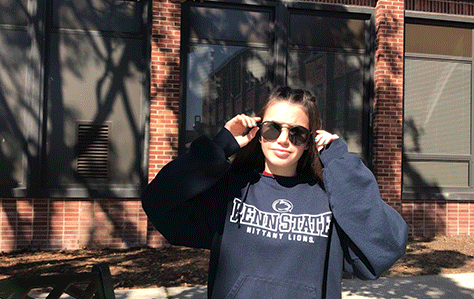13 Reasons Why misrepresents suicide and bullying
May 2, 2017
Created into a hit show from a best selling book, 13 Reasons Why was released on Netflix on March 31 as a Netflix Original Series.
This one-season-show consists of thirteen gruesome episodes, each revolving around a different “tape” about thirteen different people.
The fictional show is based on the suicide of main character Hannah Baker. Prior to her death, she recorded thirteen tapes about what her classmates and former friends did to her. The result, the show implies, is Hannah taking her own life.
Each episode unravels the truth about what she faced in her life, with some truths more damaging than others.
The truth, however, exaggerated what many high school students face daily — students who have not taken their own lives.
What Hannah faced could have been overcome if she had gotten help from her parents or another guardian.
Some of the episodes makes sense as to why she is upset, but others are nothing most students haven’t faced some time in their life.
Episode One begins with Clay Jensen receiving a box of tapes and beginning to listen, confused as to what they are and still mourning over the death of Hannah.
The first episode focuses on Justin Foley. Justin took a provocative image of Hannah and showed his friends, who then sent it out to other classmates. This is the first reason that Hannah says she took her own life.
Sexting and the sending of provocative images is unfortunately common, especially among high school students. Very rarely do these cases result in suicide, however, as this Netflix original portrayed.
Another person who pushed Hannah to suicide is Jessica. Jessica was Hannah’s first friend at school. Eventually Jessica starts to date Alex, another one of Hannah’s friends, and drift apart from Hannah. Hannah takes it to the heart and gets upset with Jessica.
In high school, friends split and new groups are formed daily; it’s a part of life. But this Netflix show does not convey that, treating Jessica’s departure from Hannah’s life as a major betrayal.
If we all stayed with our same friends from middle school until graduating high school, none of us would grow as people. By meeting new people, making decisions about whom to remain friends with and whom to say goodbye to, people define their own characters.
As for Clay, he never told Hannah something, and she blamed him for his silence.
13 Reasons Why distorts what bullying really is.
While sending out provocative pictures is a form of bullying, losing a friend is not.
One gratuitous scene shows Hannah taking a razor to her wrists, slitting them and bleeding out in her bathtub.
But is that too much for some to handle?
Some might argue that suicide is a fact, and it actually happens. While it does, it should not be shown on a television show.
There is no age limit to who could watch this show, so any child with a Netflix account could easily be subjected to this.
I’m not arguing that it isn’t good for people to be aware of suicide and bullying; it certainly is important for students to learn about how to seek help. This show, however, does not show children how to seek help — it teaches them how their lives and deaths could be glorified as a television show when the issues are never worth dying over.
Bullying is all too common, with few instances ultimately resulting in suicide. However, this Netflix original could send viewers the wrong message.
Have people been mean to you?
The answer that 13 Reasons Why provides is certainly not the best solution. Impressionable students should be guided toward help, to realize that their problems are not as insurmountable as they might seem.




